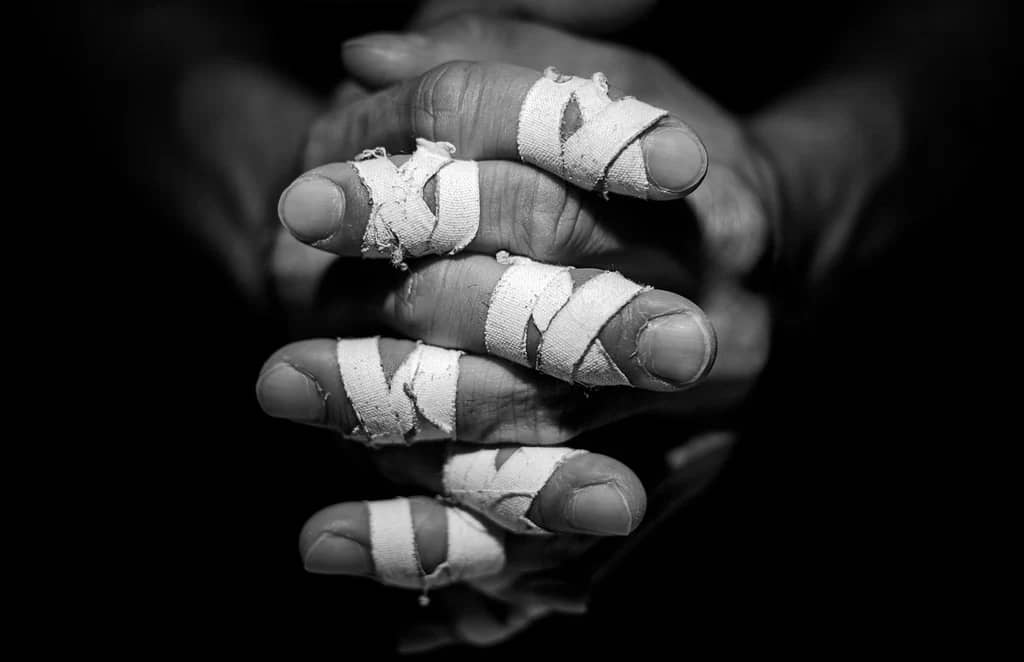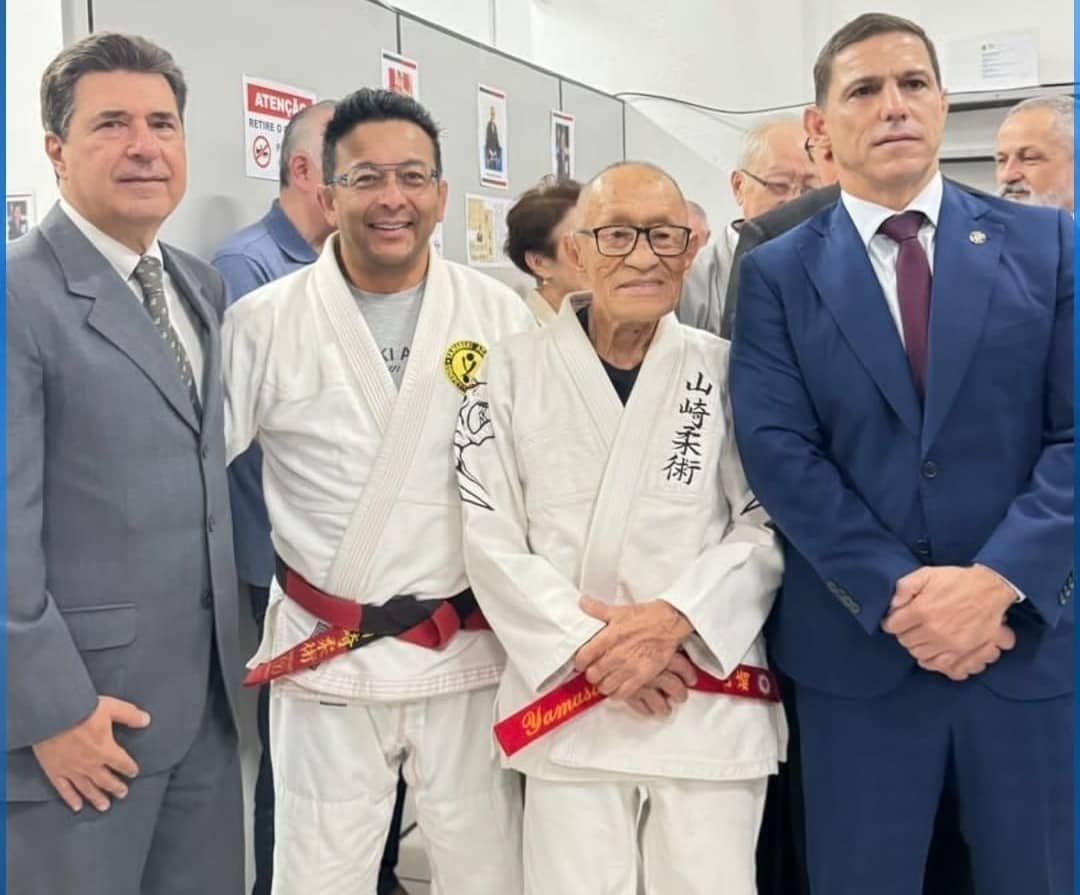
Brazilian Jiu-Jitsu (BJJ) is a physically demanding sport that places immense strain on your hands, especially your fingers. From gripping your opponent’s gi to executing various submissions, your fingers are constantly under pressure. In this article I’ll discuss a skill that has become critical for BJJ practitioners, in the way of helping to protect their hands and maximize performance on the mats. To give you a bit of insight, we’ll discuss exactly why finger taping is essential, explore the best techniques one should use, and I’ll give you some of my expert tips to keep your hands healthy and strong.
So Why Taping Your Fingers in BJJ is Crucial?
When you first step on the mats and start training BJJ, taping your fingers may not seem like much of a priority. However, as you get some experience and a couple bent-backwards fingers you quickly realize the toll of gripping, pulling, and twisting it takes on your fingers. The constant strain on the small joints in your fingers can lead to injuries like sprains, dislocations, and even long-term joint damage if left unaddressed.
So to answer my question. 👉 Here’s why taping your fingers should become a regular part of your BJJ routine:
- Prevents Injuries: Taping provides extra support to the finger joints, reducing the risk of hyperextension, sprains, and dislocations.
- Boosts Grip Strength: Proper taping can enhance your grip, allowing you to hold your opponent’s gi more securely and perform techniques with better control.
- Helps Heal Existing Injuries: If you’re dealing with sore or injured fingers, taping can stabilize the joints, providing relief and preventing further damage.
- Protects Cuts and Scars: Taping over cuts or scars shields them from friction, reducing the risk of reopening or aggravating wounds during training.
In short, a couple moments invested taping your fingers, will result in you being able to train harder, longer, and smarter, without worrying about long-term damage to your hands.

Choosing the Right BJJ Finger Tape
Choosing the right tape for your fingers is as important as learning how to tape them correctly. Not all tapes are created equal, and picking the wrong one can lead to discomfort or poor support. Here’s what to look for:
- Material Quality: The best BJJ finger tapes are made from durable materials like hard cotton or rayon. These materials offer flexibility while maintaining strong support and adhesive power, even during sweaty sessions. Avoid cheap tapes that tear easily or lose their stickiness quickly.
- Size and Width: Finger tapes come in various widths. Narrow tapes are ideal for smaller joints, while wider tapes provide more coverage for areas like knuckles. Experiment with different sizes to see what works best for your hands.
- Trusted Brands: Stick to well-known brands like Fuji Finger Tape, which are designed specifically for grappling sports. These tapes are known for their durability and long-lasting adhesive, giving you confidence during your rolls.
Benefits of Finger Taping for BJJ
Taping your fingers in BJJ offers numerous benefits that go beyond just injury prevention. Here’s how it can improve your overall performance:
- Prevents Injury: Taping helps reinforce vulnerable areas of your fingers, minimizing the risk of injury during intense gripping and sparring.
- Increases Grip Strength: A well-taped finger provides better structural support, helping you grip more effectively during chokes, sweeps, and other techniques.
- Protects Existing Injuries: Taping gives injured fingers extra stability, preventing further harm while allowing you to continue training.
- Covers Cuts and Scars: Tape acts as a barrier over open wounds, protecting them from further damage and reducing the risk of infection.
Essential BJJ Finger Taping Techniques
Learning the right taping techniques can significantly reduce the risk of injury and improve your performance on the mats. Below are five of the most common and effective finger taping methods in BJJ:
1. X-Taping Method
The X-taping method offers maximum joint support, ideal for protecting the knuckles and preventing hyperextension.
- How to Apply: Start wrapping the tape below the knuckle, cross it over the joint in an X-pattern, and secure it on the other side. Continue wrapping until the joint feels secure, but don’t restrict movement.
2. Single Helix Method
A simple spiral wrap around the finger, the Single Helix method offers light support without overly restricting finger movement.
- How to Apply: Begin at the base of the finger and wrap the tape in a spiral motion toward the joint. This method is great for mild joint discomfort or daily protection.
3. Double Helix Method
For added support, the Double Helix method involves wrapping the finger twice in a spiral.
- How to Apply: Start at the base, spiral up toward the knuckle, then reverse direction and wrap back down. This technique offers stronger support for more serious injuries or sore joints.
4. Buddy Taping Method
Buddy taping is used when one finger is injured, pairing it with a healthy one for additional support.
- How to Apply: Tape the injured finger to the adjacent finger at both the base and middle. Make sure not to tape too tightly to avoid restricting blood flow.
5. Wrap Only Method
This method involves simply wrapping tape around a finger joint for basic protection during training.
- How to Apply: Wrap the tape around the joint multiple times for moderate support without limiting your range of motion.
Common Mistakes to Avoid When Taping Fingers
While taping can be highly beneficial, there are common mistakes that can make the process less effective or even cause discomfort:
- Wrapping Too Tightly: Taping too tightly can restrict blood flow, leading to numbness and discomfort. Ensure the tape is snug but allows for some movement.
- Overlapping Too Much: Excessive overlap creates unnecessary bulk, which can hinder flexibility. Keep wraps smooth and flat against the skin.
- Using the Wrong Tape: Not all tapes are suited for BJJ. Athletic tape or generic adhesive tape may not provide the durability and support needed during grappling.
Caring for Your Taped Fingers Post-Training
After an intense session, it’s important to care for your taped fingers properly to prevent skin irritation or further injury:
- Remove Tape Gently: Don’t rip the tape off quickly; it can damage your skin or aggravate an injury. Slowly unwind the tape or use scissors if needed.
- Inspect Your Fingers: After removing the tape, check your fingers for any signs of cuts, swelling, or irritation. Address any issues immediately by cleaning the area and applying antibacterial ointment.
- Rest and Recovery: If your fingers are sore, give them a break by resting and elevating them to reduce swelling. Allow time for proper recovery before your next session.
Conclusion
Taping your fingers in BJJ is more than just a protective measure—it’s a way to ensure that you can train safely, effectively, and without interruption. By using the right techniques and choosing high-quality tape, you’re giving yourself the best chance to avoid injuries and perform at your peak. Remember, your hands are one of your most valuable tools on the mat. Protect them with proper taping, and you’ll be able to enjoy BJJ for years to come.
To read other Blog articles 📖 that I have published. Simply click 🖱️on this URL Annapolis Jiu Jitsu Blog Articles.
If you want to take your grappling performance 💪 to the next level. Check out A1Grappler. Our specific line of Grappling 💊Nutritional Supplements, designed by Grapplers for Grapplers🥋🤼♀️ .
Interested in Brazilian Jiu Jitsu. Start in Annapolis’ premier Jiu Jitsu Academy. Our instructor staff consists of Brazilian National Champions, Pan American World Champion Masters World Champions and North American Grappling Champions. It gets NO better than Team Randori. Click HERE TO START.
Professor Al Hogan is a recent inductee in the U.S. Martial Arts Hall of Fame (2024) and a two time IBJJF Masters World Champion and Pan American Champion. He is renowned for his expertise in Brazilian Jiu Jitsu and Defensive Tactics Instruction, catering to the Jiu Jitsu enthusiast, law enforcement, military and security personnel.
👊 If you’re ready to amplify your Jiu Jitsu journey under Professor Al's tutelage, we offer you a complementary 1 Week Free Membership in our academy.



